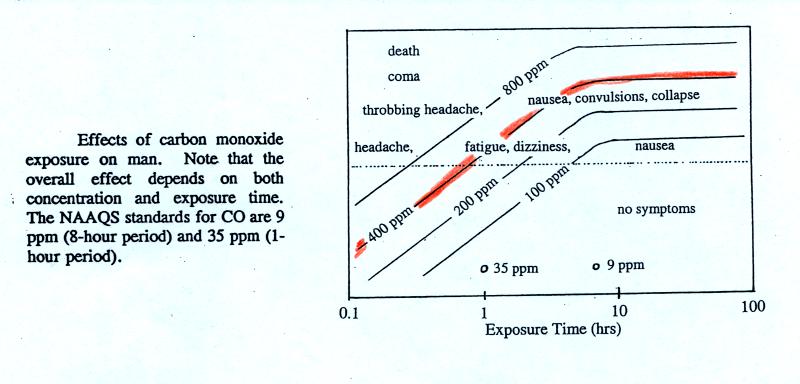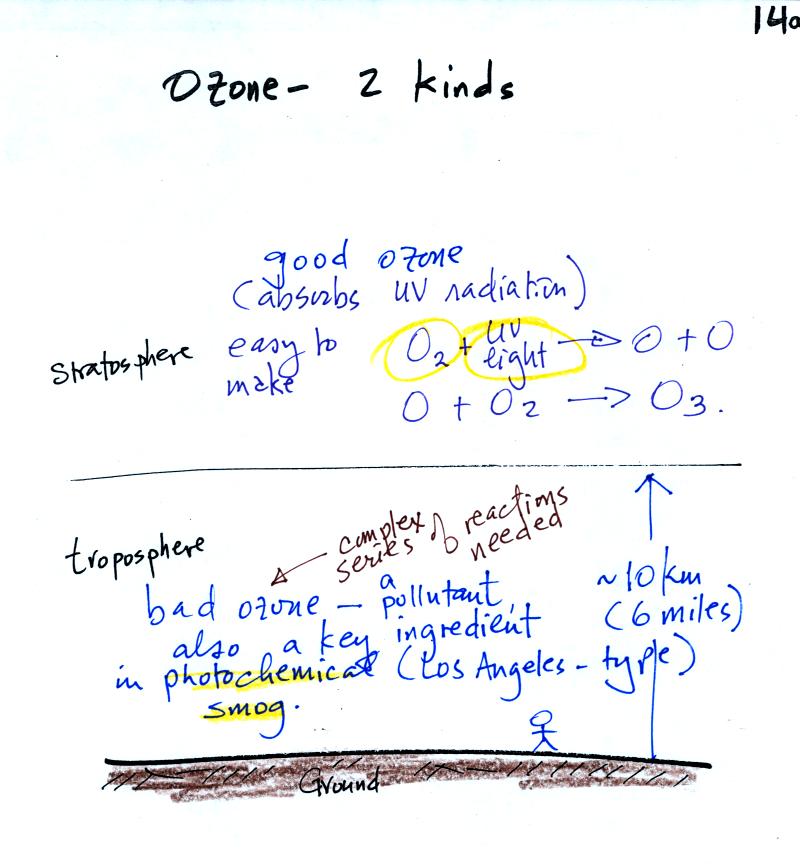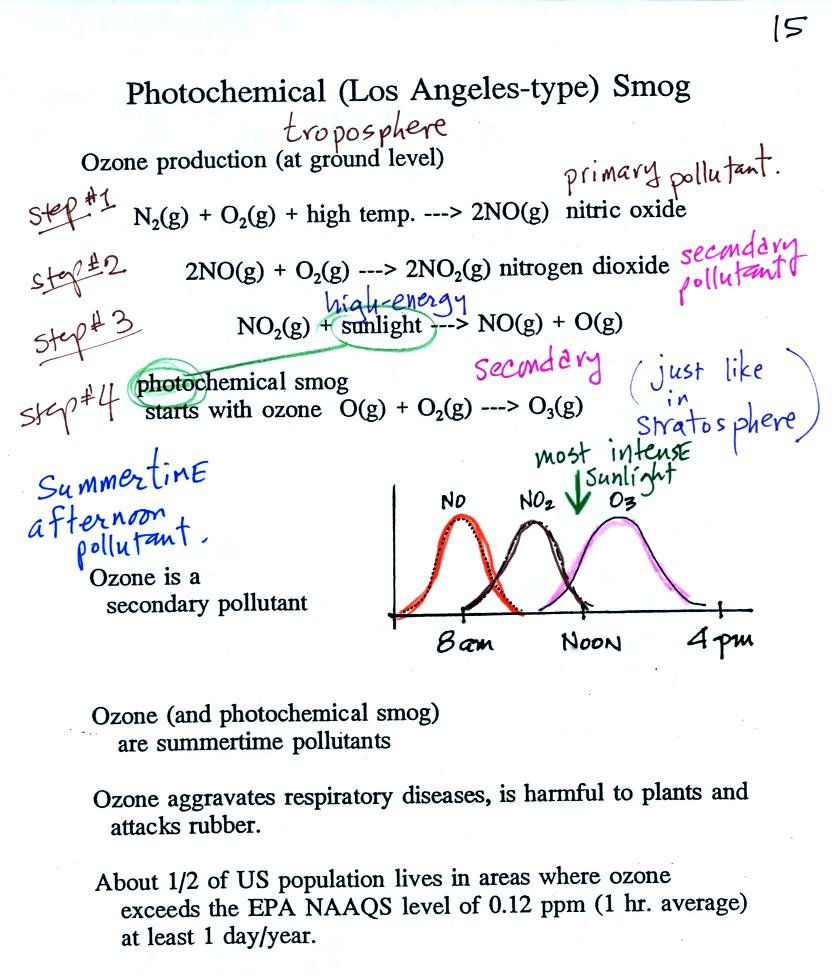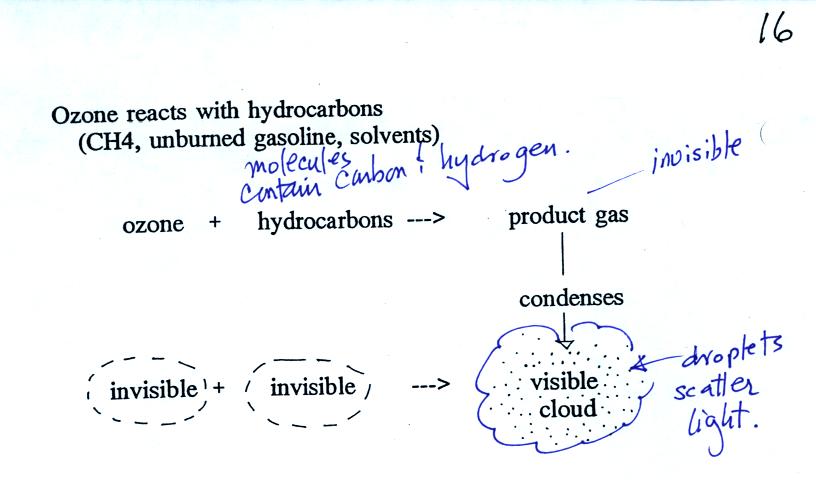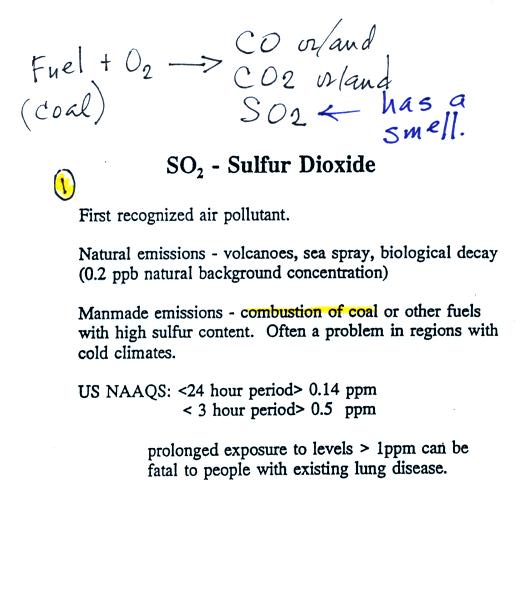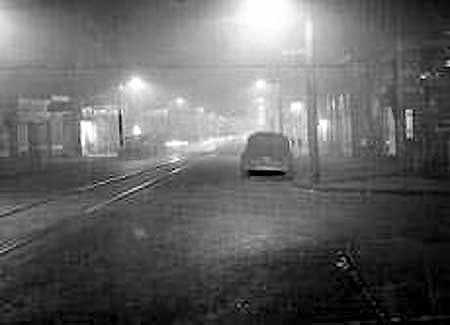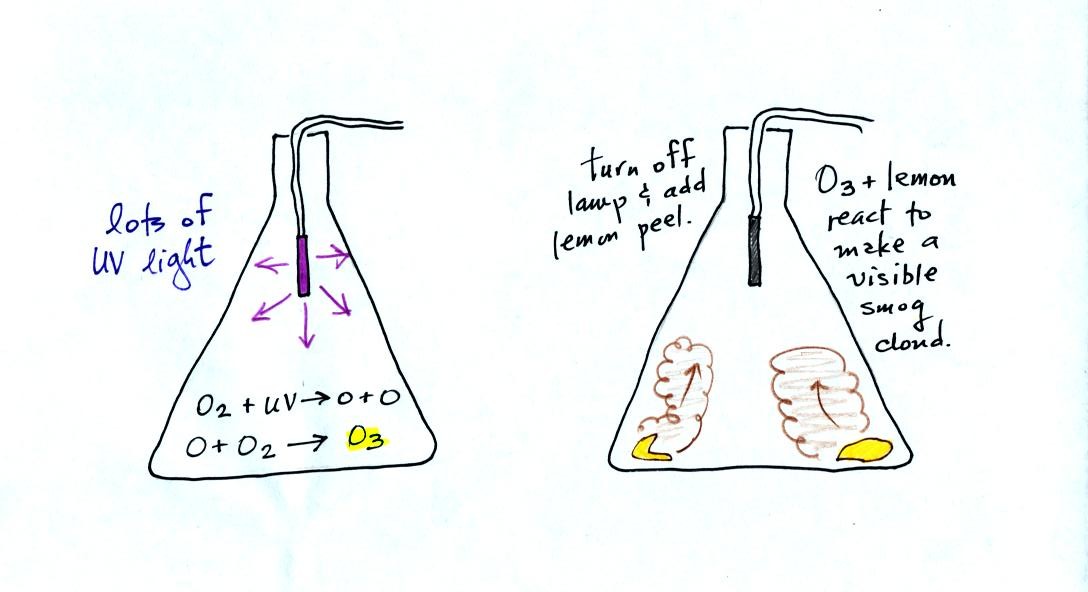
Once the cloud had formed we shined
the laser beam through the flask. Laser light wasn't visible to
the left or the right of the flask, only in the flask where smog
droplets were present and scattering laser light. The smog
droplets (and they may well be solid particles, I don't know) are very
small and even the weakest air current is able to keep them suspended.
Next we
moved on to the 3rd air pollutant that we will be discussing -
sulfur dioxide. Here's some basic information from the left hand
of p. 11 in the photocopied ClassNotes.
Sulfur dioxide is produced by the
combustion of sulfur
containing
fuels such as coal. Combustion of fuel also produces carbon
dioxide and carbon monoxide. People probably first became aware
of sulfur dioxide because it has an unpleasant smell. Carbon
dioxide and carbon monoxide are odorless. That is why sulfur
dioxide was the first pollutant people became aware of.
Volcanoes are a natural source of sulfur dioxide.
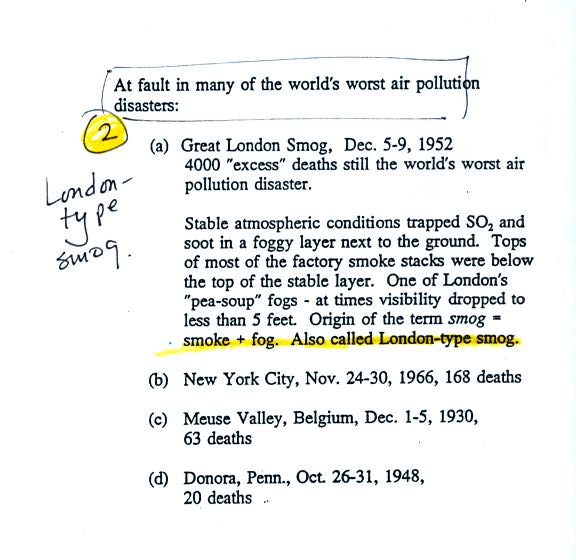
The
Great
London smog is still one of the two or three deadliest air pollution
events in
history.
Because of a subsidence inversion the atmosphere was stable
SO2
emitted into air
at ground level couldn't mix with cleaner air above.
The SO2
concentration was able to build to dangerous levels.
4000 people
died during this 4 or 5 day period.
As many as 8000 additional
people died in the following weeks and months.
Some
of the photographs below come from articles published in 2002 on the
50th anniversary of the event.
The sulfur dioxide didn't
kill people directly.
The SO2 aggravated
an existing
condition of some kind and hastened their
death.
The SO2 probably also made people susceptible
to bacterial
infections such as pneumonia.
This
link discusses the event and its health effects in more detail.
Note:
London type smog which contains sulfur dioxide and is
most
common
during the winter is very different from photochemical or Los Angeles
type smog. Los Angeles type smog contains ozone and is most
common in the summer.
Some other air pollution disasters also involved high SO2
concentrations.
One of the deadliest events in the US occurred in
1948 in Donora, Pennsylvania.
"This eerie photograph was taken at noon on Oct.
29, 1948 in Donora, PA as deadly smog enveloped the town. 20 people
were asphyxiated and more than 7,000 became seriously ill during this
horrible event."
from: http://oceanservice.noaa.gov/education/kits/pollution/02history.html
from: http://www.eoearth.org/article/Donora,_Pennsylvania
"When Smoke Ran Like Water," a
book
about air pollution is among the books that you can check out, read,
and report on to fulfill part of the writing requirements in this class
(instead of doing an experiment report). The
author, Devra Davis, lived in Donora Pennsylvania at the time of the
1948 air pollution episode.
